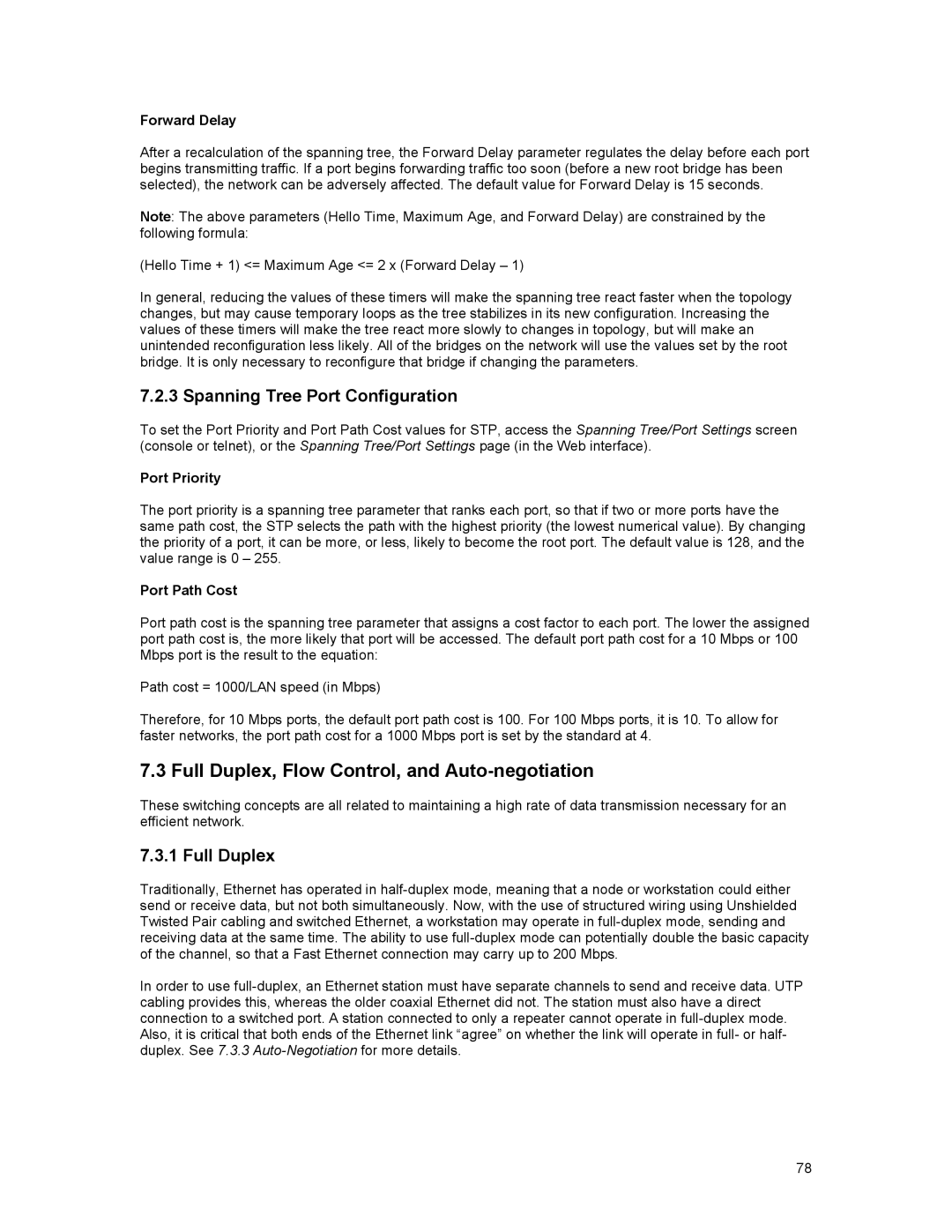Forward Delay
After a recalculation of the spanning tree, the Forward Delay parameter regulates the delay before each port begins transmitting traffic. If a port begins forwarding traffic too soon (before a new root bridge has been selected), the network can be adversely affected. The default value for Forward Delay is 15 seconds.
Note: The above parameters (Hello Time, Maximum Age, and Forward Delay) are constrained by the following formula:
(Hello Time + 1) <= Maximum Age <= 2 x (Forward Delay – 1)
In general, reducing the values of these timers will make the spanning tree react faster when the topology changes, but may cause temporary loops as the tree stabilizes in its new configuration. Increasing the values of these timers will make the tree react more slowly to changes in topology, but will make an unintended reconfiguration less likely. All of the bridges on the network will use the values set by the root bridge. It is only necessary to reconfigure that bridge if changing the parameters.
7.2.3 Spanning Tree Port Configuration
To set the Port Priority and Port Path Cost values for STP, access the Spanning Tree/Port Settings screen (console or telnet), or the Spanning Tree/Port Settings page (in the Web interface).
Port Priority
The port priority is a spanning tree parameter that ranks each port, so that if two or more ports have the same path cost, the STP selects the path with the highest priority (the lowest numerical value). By changing the priority of a port, it can be more, or less, likely to become the root port. The default value is 128, and the value range is 0 – 255.
Port Path Cost
Port path cost is the spanning tree parameter that assigns a cost factor to each port. The lower the assigned port path cost is, the more likely that port will be accessed. The default port path cost for a 10 Mbps or 100 Mbps port is the result to the equation:
Path cost = 1000/LAN speed (in Mbps)
Therefore, for 10 Mbps ports, the default port path cost is 100. For 100 Mbps ports, it is 10. To allow for faster networks, the port path cost for a 1000 Mbps port is set by the standard at 4.
7.3 Full Duplex, Flow Control, and Auto-negotiation
These switching concepts are all related to maintaining a high rate of data transmission necessary for an efficient network.
7.3.1 Full Duplex
Traditionally, Ethernet has operated in
In order to use
78
